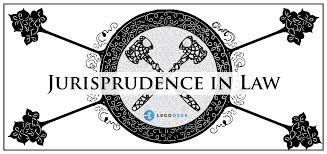Mischief Rule of Interpretation: An Analysis
One of the ways to interpret laws or statutes is through the mischief rule,
also called the Heydon's Rule or Rule in Heydon's Case, which is utilized in
various common law regions such as the UK and India. The rule aims to uncover
the reason and objective behind a statue's creation. Its purpose is to aid
judges in determining the "mischief" or issue that the legislation was meant to
solve and understand the statute in a manner that meets the legislative intent.
The main intention of the rule is to find out the mischief and defect that the statute in question has set out to remedy, and what ruling would implement this remedy effectively.
Consideration is to be given to four things for the proper interpretation of all statutes, whether they be beneficial, penal, restrictive, or enlarging of common law, as stipulated in Heyden's case.
Identify the Statute: To begin with, you need to identify which statute or law is needing interpretation.
Examine the Mischief: "The problem of mischief" should be examined under the mischief rule, which entails examining the legal dilemma that the statute sought to address. To accomplish this, the lawmakers' intention for the law must be evaluated. Prior to the statute's adoption, what was the legal predicament or problem that needed resolution?
Identify the Remedy: Identifying the remedy is crucial. It involves uncovering the intended solution provided by the legislature for the issue at hand.
Interpretation: In a bid to forward the remedy proposed by the legislature, the rule instructs the interpreter to decipher the statute, implying that the judge must scrutinize the statute while keeping the issue it aims to solve in mind.
Avoid Going Beyond the Mischief: Judges who turn to the mischief rule should exercise caution in their interpretation so as to refrain from exceeding the bounds of necessity when addressing the problem at hand. Rather than encompassing wider or unforeseen implications, it strictly targets the narrow concern which the legislature was addressing.
Arriving at a more purposive and equitable interpretation is the aim of the mischief rule. This is achieved by focusing on the reason behind the statute's enactment, especially when the language is ambiguous or clarification is needed. To do so, judges rely on the historical context and the problem the legislature aimed to solve. This approach can prove particularly useful in ensuring that the intention of the legislature is upheld.
Judicial interpreters use a variety of methods, including the mischief rule, to interpret statutes. However, the golden rule, literal rule, and purposive approach may be employed depending on the situation and the law's legislative intention.
Explanation:
An illustration of the mischief rule can be observed in the case of Smith v. Hughes (1960), which is a well-known instance in the realm of English law. The inquiry at hand was whether a street prostitute, the defendant, could be convicted of soliciting with the intention of prostitution. As per the Street Offences Act, 1959, it was against the law for a regular prostitute to linger or entice in a public place or street for the objective of prostitution.
In this case:
Identify the Statute: The Street Offences Act of 1959 was the statute that should be identified.
Examine the Mischief: The solicitation of prostitutes on the streets was the "mischief" that the statute aimed to address. It was deemed a public nuisance and moral concern. The legislature's goal was to regulate and control such activities.
Identify the Remedy: In public places, prostitutes are not allowed to solicit as per the legislature's intended remedy.
Interpretation: Applying the mischief rule, the court made its interpretation by taking into consideration both the issue and the intended solution. The crux of the matter revolved around whether the defendant's actions, although happening indoors, were targeted towards the passersby outside, thereby creating confusion as to whether it came within the scope of the statute.
Ultimately, the court's ruling held the defendant as culpable under the Act, as the judge concluded that the statute's primary aim was to address the more extensive problem of solicitation in public areas. The defendant's activities, though conducted domestically, nevertheless pursued the same malevolent goals that the statute attempted to prevent.
Avoid Going Beyond the Mischief: The court aligned its interpretation with the intended solution, rather than overextending beyond the issue at hand. This prevented unnecessary complications.
By examining the underlying issue that a law intended to fix and interpreting it in a manner that aligns with the intent of those who drafted it, the mischief rule can be employed to decipher a statute. Despite its wording not necessarily being applicable to particular scenarios, the legislation's primary objective must be met, as demonstrated in the Smith v. Hughes ruling.
Court Judgments:
In the case of Novartis Ag v. Union of India (2013) 6 SCC 1: AIR 2013 SC 1311, the court stated that the most effective means of ascertaining the meaning and intent of a statute is through the mischief rule. For patent law in India, this ruling is especially significant.
In the case of British Airways Plc v. Union of India (2002) 2 SCC 95: AIR 2002 SC 391, the Supreme Court observed that advancing the remedy and suppressing the mischief is what the court's duty is.
In the case of K.S. Paripooran v. State of Kerala, AIR 1995 SC 1012, it was held by the court that when interpreting provisions of law, it is important for the court to determine the pre-existing law, identify any issues or flaws in that law, and understand Parliament's intentions for addressing the situation. Legislation, especially if enacted to prevent social mischief, is typically interpreted to benefit the general public.
Conclusion
In legal decision-making, the mischief rule of interpretation proves to be a valuable asset, providing judges with the means to deduce and apply the accurate intention and objective of legislation. By going beyond the literal text of a statute and instead focusing on the historical context, purpose of the law, and legislative correction proposed, judges can arrive at interpretations that coincide with the legislature's overarching ambitions.
Adopting this strategy guarantees that the law serves its purpose, especially in situations where the wording of the statute is insufficient to account for every given situation, ultimately encouraging a fair, just and effective operation of the legal system.
References:
Also Read:
The main intention of the rule is to find out the mischief and defect that the statute in question has set out to remedy, and what ruling would implement this remedy effectively.
Consideration is to be given to four things for the proper interpretation of all statutes, whether they be beneficial, penal, restrictive, or enlarging of common law, as stipulated in Heyden's case.
- What was the common law before the Act was made?
- What were the mischief and defect for which there was no remedy?
- What remedy the legislature proposed to cure the disease?
- The true reason behind the remedy.
Process of Applying the Mischief Rule
To clarify, the process for applying the mischief rule is as follows:Identify the Statute: To begin with, you need to identify which statute or law is needing interpretation.
Examine the Mischief: "The problem of mischief" should be examined under the mischief rule, which entails examining the legal dilemma that the statute sought to address. To accomplish this, the lawmakers' intention for the law must be evaluated. Prior to the statute's adoption, what was the legal predicament or problem that needed resolution?
Identify the Remedy: Identifying the remedy is crucial. It involves uncovering the intended solution provided by the legislature for the issue at hand.
Interpretation: In a bid to forward the remedy proposed by the legislature, the rule instructs the interpreter to decipher the statute, implying that the judge must scrutinize the statute while keeping the issue it aims to solve in mind.
Avoid Going Beyond the Mischief: Judges who turn to the mischief rule should exercise caution in their interpretation so as to refrain from exceeding the bounds of necessity when addressing the problem at hand. Rather than encompassing wider or unforeseen implications, it strictly targets the narrow concern which the legislature was addressing.
Arriving at a more purposive and equitable interpretation is the aim of the mischief rule. This is achieved by focusing on the reason behind the statute's enactment, especially when the language is ambiguous or clarification is needed. To do so, judges rely on the historical context and the problem the legislature aimed to solve. This approach can prove particularly useful in ensuring that the intention of the legislature is upheld.
Judicial interpreters use a variety of methods, including the mischief rule, to interpret statutes. However, the golden rule, literal rule, and purposive approach may be employed depending on the situation and the law's legislative intention.
Explanation:
An illustration of the mischief rule can be observed in the case of Smith v. Hughes (1960), which is a well-known instance in the realm of English law. The inquiry at hand was whether a street prostitute, the defendant, could be convicted of soliciting with the intention of prostitution. As per the Street Offences Act, 1959, it was against the law for a regular prostitute to linger or entice in a public place or street for the objective of prostitution.
In this case:
Identify the Statute: The Street Offences Act of 1959 was the statute that should be identified.
Examine the Mischief: The solicitation of prostitutes on the streets was the "mischief" that the statute aimed to address. It was deemed a public nuisance and moral concern. The legislature's goal was to regulate and control such activities.
Identify the Remedy: In public places, prostitutes are not allowed to solicit as per the legislature's intended remedy.
Interpretation: Applying the mischief rule, the court made its interpretation by taking into consideration both the issue and the intended solution. The crux of the matter revolved around whether the defendant's actions, although happening indoors, were targeted towards the passersby outside, thereby creating confusion as to whether it came within the scope of the statute.
Ultimately, the court's ruling held the defendant as culpable under the Act, as the judge concluded that the statute's primary aim was to address the more extensive problem of solicitation in public areas. The defendant's activities, though conducted domestically, nevertheless pursued the same malevolent goals that the statute attempted to prevent.
Avoid Going Beyond the Mischief: The court aligned its interpretation with the intended solution, rather than overextending beyond the issue at hand. This prevented unnecessary complications.
By examining the underlying issue that a law intended to fix and interpreting it in a manner that aligns with the intent of those who drafted it, the mischief rule can be employed to decipher a statute. Despite its wording not necessarily being applicable to particular scenarios, the legislation's primary objective must be met, as demonstrated in the Smith v. Hughes ruling.
Court Judgments:
In the case of Novartis Ag v. Union of India (2013) 6 SCC 1: AIR 2013 SC 1311, the court stated that the most effective means of ascertaining the meaning and intent of a statute is through the mischief rule. For patent law in India, this ruling is especially significant.
In the case of British Airways Plc v. Union of India (2002) 2 SCC 95: AIR 2002 SC 391, the Supreme Court observed that advancing the remedy and suppressing the mischief is what the court's duty is.
In the case of K.S. Paripooran v. State of Kerala, AIR 1995 SC 1012, it was held by the court that when interpreting provisions of law, it is important for the court to determine the pre-existing law, identify any issues or flaws in that law, and understand Parliament's intentions for addressing the situation. Legislation, especially if enacted to prevent social mischief, is typically interpreted to benefit the general public.
Conclusion
In legal decision-making, the mischief rule of interpretation proves to be a valuable asset, providing judges with the means to deduce and apply the accurate intention and objective of legislation. By going beyond the literal text of a statute and instead focusing on the historical context, purpose of the law, and legislative correction proposed, judges can arrive at interpretations that coincide with the legislature's overarching ambitions.
Adopting this strategy guarantees that the law serves its purpose, especially in situations where the wording of the statute is insufficient to account for every given situation, ultimately encouraging a fair, just and effective operation of the legal system.
References:
- Interpretation of Statutes, D. N. Mathur, Central Law Publications
- Interpretation of Statutes, P. Krishnaswamy, Asia Law House
Also Read:
Law Article in India
Legal Question & Answers
Lawyers in India - Search By City
LawArticles
How To File For Mutual Divorce In Delhi

How To File For Mutual Divorce In Delhi Mutual Consent Divorce is the Simplest Way to Obtain a D...
Increased Age For Girls Marriage

It is hoped that the Prohibition of Child Marriage (Amendment) Bill, 2021, which intends to inc...
Facade of Social Media

One may very easily get absorbed in the lives of others as one scrolls through a Facebook news ...
Section 482 CrPc - Quashing Of FIR: Guid...

The Inherent power under Section 482 in The Code Of Criminal Procedure, 1973 (37th Chapter of t...
The Uniform Civil Code (UCC) in India: A...

The Uniform Civil Code (UCC) is a concept that proposes the unification of personal laws across...
Role Of Artificial Intelligence In Legal...

Artificial intelligence (AI) is revolutionizing various sectors of the economy, and the legal i...








Please Drop Your Comments